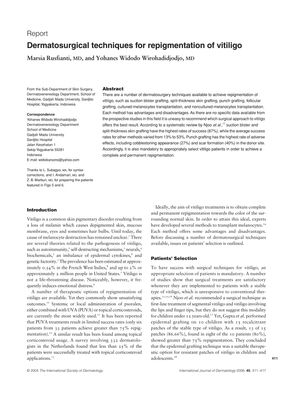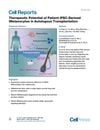Dermatosurgical Techniques for Repigmentation of Vitiligo
April 2006
in “
International Journal of Dermatology
”

TLDR Surgical methods like suction blister grafting and split-thickness skin grafting are highly successful for vitiligo repigmentation, but choosing the right patients is crucial for success.
The document from 2006 examines various surgical methods for restoring pigment in vitiligo-affected skin, with suction blister grafting (SBG) and split-thickness skin grafting (STSG) showing the highest success rates of 87%. Other techniques like punch grafting, follicular grafting, and melanocyte transplantation (both cultured and noncultured) have varying success rates and potential adverse effects. Punch grafting has a 67% success rate but can cause a cobblestoning appearance in 21-33% of patients, while follicular grafting is beneficial for hair restoration but is time-consuming. Cultured melanocyte transplantation can cover large areas but is expensive, whereas noncultured transplantation is less costly and achieves a 55% success rate of over 70% repigmentation within 3 months. The document stresses the importance of patient selection, particularly for those with stable vitiligo, and notes that the SBG method is particularly suitable for segmental vitiligo and sensitive areas like the eyelids, despite its unsuitability for large areas. STSG provides immediate results but may lead to hyperpigmentation and scarring. The document concludes that while each method has pros and cons, selecting the right patients is key to successful and permanent repigmentation.



